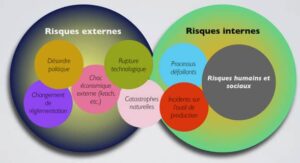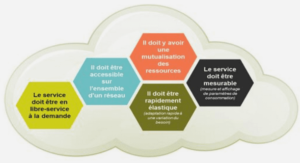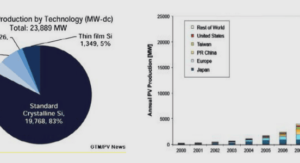CHILDHOOD TRAUMA IN TONI MORRISON’S THE
BLUEST EYE (1970) and SULA (1973)
TRAUMA DUE TO SOCIAL OPPRESSION
In Morrison’s narratives, dissociated subjectivity, like Pecola’s in The Bluest Eye, is usually connected to slavery and its sequels and, as Linda Koolish observes, is frequently the consequence of the confrontation between the Blacks’ own definition of themselves and slavery’s misrepresentation of African Americans as subhumans3 . However, Morrison has also dealt with insanity caused by other emotionally scarring situations, such as war in Sula’s character, Sula Peace; a black girl who was regarded as evil and bewitched by the black community regards her.
Racial Issues
Racism began in America when white masters brought the African slaves in chains and used them as laborers to work on plantation farms to fill their coffers. Very soon the black laborers ceased to exist as a human being in the white world and were reduced to a ‘body,’ a profit making ‘body.’ Racism, Sexism and Classism signify the traumatic conditions under which African-Americans live in white America. These systems of societal and psychological oppression have adversely affected the lives of blacks in general, which have impacts on children living conditions. Black Community had to face atrocities like racism and exploitation, irrespective of sex. Race, class and gender have figured prominently as themes in Toni Morrison’s writing over the years. Morrison has tried to trace the development of black image from its infantile stage of invisibility to its present stage of self-definition and assertion. Inter-racial oppression is a conflict between two different races, basing on some physical characteristics such as skin color, nose size, eyes color and lips shape. This can be extended to social class, caste and ethnicity. Intra racism or the so-called colorism is a kind of discrimination within the same racial group, believing, as in the African-American history and context, in the superiority of the lighter and the inferiority in the darkly skinned ones. The practice of colorism began with slavery when the white slaves masters impregnate their black mistresses and, thus, give birth to children with lighter skin known as Mulattos. Though those mulattos were not legitimately recognized by their white fathers, they received better treatment than other darker skin slaves did. Thereby, this preference led to division and hatred among blacks and because the darkly skinned were rejected and hated, many fairly skinned 3 Koolish Lynda, 2001, “To be Loved and Cry Shame”, pg.174 7 blacks have passed, under the phenomenon of racial policies, for white to avoid the segregation forced on blacks prior the Civil Rights Movement. Under the racist Jim Crow system, African Americans vacillate between assimilation or segregation; blacks and whites were separated in all public facilities, school, transport, churches and the black were given the dirtiest and they could not keep on self-worth without passing as white. African American literature has been always engaged and endeavored to halt and eliminate the forms of inter and intra racial atrocities. Many black American writers have put the spotlight on the issue projecting the dangerous results of its practice. Toni Morrison is one of these authors. She repeatedly speaks about inter and intra racial violence in her fiction and for her, “storytelling and the process of writing”, as Stephani Li wrote, “are the ways to explore the challenges of the human existence; how individuals both flourish and hurt one another, how oppression operates, how communities sustain generations”4 . Indeed, Colorism as a question of racism and origin of black families’ destruction is seen in many of Morrison’s works including Beloved, Tar Baby, The Bluest Eye, A Mercy, and Sula among others. Morrison is able to use her critical eye to reveal to the reader the evil that is caused by a society that is indoctrinated by the inherent goodness and beauty of whiteness and the ugliness of blackness. She uses many different writing tools to depict how « white » beliefs have dominated American and African American culture. The narrative structure of The Bluest Eye is important in revealing just how pervasive and destructive social racism is. Morrison’s examination of lives of different characters that form this black community presents the black experience in a Midwest town-a microcosm for the experience of blacks in America. Morrison uses Pecola and the character in Pecola’s life to explore the dangers involved for the black community and all communities alike to buy into the idea that white and only white was beautiful. These social standards produced by the media and white people’s views at the time were idiotic and biased, yet where fairly universal in America at that time. These social standards were unnecessarily hurting people, and Morrison wanted to show the suffering that can arise from buying into those beliefs. The social predicament in which Pecola and her parents are placed is expressed in the main body of the novel, which is divided into seasonal sections. By beginning the novel with autumn, Morrison suggests that the world of the black community in Lorain is “topsy-turvy”. These seasonal divisions help in telling Morrison’s story of the wrapped psyche of an 4 Li Stephani, 2010, “Toni Morrison: A Biography”, pg.13 8 adolescent female living in a racist society. There are many incidents in the novel, which constantly push Pecola towards a marginal existence because of internal racism. Her encounter with a fifty-two-year old storekeeper makes her aware that for many people she does not really exist. Black boys humiliate her at school; she becomes a scapegoat for their own humiliation and pain. The next incident is with Geraldine, the middle class woman who wants to erase her blackness, her very identity. In poor, unkempt Pecola, she sees a type, a class for whom she has only disgust. For Geraldine, Pecola is a ‘dirty, loud, nigger’. Her cruel rejection of Pecola once again devastates the young girl. Pecola’s last encounter is with Soaphead Church, the West Indian of mixed parentage. Although Pecola’s request for blue eyes moves him tremendously, he too victimizes her by making her innocently poison a dog he detests. Rejection by the more affluent segments of society is bad enough, but Pecola is cast out by her own family. The ultimate act of brutalization and betrayal for Pecola comes when her own father rapes her. Cholly’s unnatural rape of Pecola is an attempt to rescue her from the dehumanizing gaze of the white people. His tenderness and protectiveness as a father however turns into lust and rage. The dangerously free Cholly rapes her twice, turning her outdoors, pushing her towards despair and the fringes of insanity. Ultimately, Pecola is made the scapegoat for the entire community. Her ugliness has made them feel beautiful, her suffering has made them comfortable and her silence has given them the opportunity to speak. However, because she continues to live after she has lost her mind, Pecola’s aimless wandering at the edge of the town haunts the community reminding them of the ugliness and hatred that they have tried to repress. She becomes a reminder of human cruelty and an emblem of human suffering. The third family represented by Elihue Whitcomb Soaphead Church is so obsessed with the physical appearance of Europeans that they endanger their mental stability by intermarrying to maintain some semblance of whiteness. Pecola thus becomes a victim of this intra-community class conflict, which further leads to her destruction. Pecola suffers not only because she is black and poor, but also because she is a female. The gender issue therefore becomes an important one in the novel. Pecola’s destruction is almost like genocide, which viciously claims her sanity. Pecola experiences and undergoes the same subjection and marginalization that any other woman would experience under patriarchal imperialism. The themes of race, class and gender are inter-related in The Bluest Eye. Spurned and rejected by a community plagued by the virus of self-hatred, Pecola is pushed to the fringes of 9 the town and towards marginality, both literally and figuratively. Madness is Pecola’s fate and there is no savior for her. Claudia observes towards the end of the novel, “It’s much, much, much too late.”5 The way in which trauma affects an individual is different from how it affects a culture. As a cultural process, trauma is mediated through various forms of representation and linked to the reformation of collective identity and the reworking of collective memory. Three prominent characters in Morrison’s The Bluest Eye, Cholly Breedlove, Pauline Breedlove, and Pecola Breedlove, deal not only with the struggle to form personal identities, but also with the presence of whiteness in society and the pressure to meet society’s white standard. Due to their repressed social status, Morrison’s characters are only able to experience relationships if those who hold power over them grant them the privilege to do so. Cholly Breedlove is one of the male characters in The Bluest Eye whose life is negatively impacted by his inability to identify with his ancestral past. Cholly is abandoned by his father before his birth, abandoned by his mother nine days after birth, and is rescued and raised by his grandmother who does not hesitate to remind him that he owes her his life. Part of Cholly’s difficultly with the formation of his own identity stems from a lack of ancestral past and failure to progress during the early stages of Erik Erikson’s psychosocial theory. Erikson’s theory of psychosocial development includes eight stages; each stage is marked by a conflict or crisis between the person and his or her environment. During each of these conflicts, the individual is “vulnerable and moving toward increased potential; each conflict is a moment to decide between progress and regression” 6 . The first of Erikson’s eight stages is referred to as Trust Versus Mistrust. This stage is characterized by “the development (or lack of development) of a trust for others and the self, or a sense of confidence in infancy”7 . Cholly does not experience any confidence during intimacy because he is unable to bond with his parents, and his grandmother, even though she takes it upon herself to save Cholly and raise him, remains at an emotional distance. Not only is the failure to progress beyond the first stage of development to blame for Cholly’s fractured identity, but Cholly is also disturbed by the fact that he is not his father’s namesake.
Violence as a Tool of Trauma
Violence is « the use of physical force so as to injure, abuse, damage, or destroy. Less conventional definitions are also used, such as the World Health Organization’s definition of violence as “the intentional use of physical force or power, threatened or actual, against oneself, another person, or against a group or community, which either results in or has a high likelihood of resulting in injury, death, psychological harm, mal-development, or deprivation.” Child abuse has for a long time been recorded in literature, art and science in many parts of 22 Morrison Toni, 1973 “Sula” Pg.5 19 the world. Reports of infanticide, mutilation, abandonment and other forms of violence against children date back to ancient civilizations. The historical record is also filled with reports of unkempt, weak and malnourished children cast out by families to fend for themselves and of children who have been sexually abused. Childhood abuse or molestation has been a major issue in the discourses of literature and psychology and has been a subject of study for many physicians, psychoanalysts and writers. On studies and insights into the issue, psychoanalysts, and in the vanguard Sigmund Freud, and later, Judith Herman, capitalize the necessity of having sane childhood for full development and mature identity . Sexual violence means any sexual act or an act targeting a person’s sexuality, gender identity or gender expression, whether the act is physical or psychological in nature that is committed, threatened or attempted against a person without the person’s consent. It includes sexual assault, sexual harassment, stalking, indecent exposure, voyeurism and sexual exploitation. For further clarity, sexual assault includes rape as Pecola Breedlove experienced in The Bluest Eye. The Bluest Eye by Toni Morrison is just as much about sexual violence and gender disparity as it is racial hatred. Eleven-year-old Pecola Breedlove is raped and impregnated by her father, and slowly goes insane after the baby dies prematurely. She is not only violently assaulted to the point of fainting, but also ostracized and mocked by her community. Neighbors participate in victim blaming, saying things like, “She carry some of the blame,” and “How come she didn’t fight him?”24 Her own mother is said not to believe her, choosing to either remain removed from the matter or take her abusive husband’s side. Although Cholly is originally seen as evil, Morrison reveals that he dealt with racism and was forced to be sexually violent to Darlene when he was a teenager. A second-wave feminist lens is the best way to critique Pecola’s mother. Pauline uses her husband’s adultery and violence as a gateway to a community of Christian women who view her as a martyr. She does this by complaining of how badly Cholly treats her. Pauline’s foot is a source of embarrassment when she moves up north, and she tries to be beautiful like the white women in Hollywood. Like Pecola and Claudia, she is aware that whiteness means beauty. When she loses her tooth, she decides to put all her energy on serving her “white family,” the Fishers. Pauline cares more about this family than her own, letting them call her “Polly” and baking a pie for the little white girl she watches. When Pecola accidentally knocks down a pan full of blueberries, her mother slaps her twice in a rage and comforts the little white girl: “Hush, baby, hush. Come 23 Herman Judith, 1992 “Trauma and Recovery” 24 Morrison Toni, 1970, “The Bluest Eye”, pg. 189 20 here. Oh lord, look at your dress. Don’t cry no more. Polly will change it.”25 Pauline is not incapable of being a mother to her children, but chooses to nurture the white family because they match her ideal household. In this way, she challenges biological essentialism, because she chooses whom to nurture. Morrison offers a view of gender disparity through race in The Bluest Eye, showing that black women and girls are doubly oppressed because of their race and gender. Pecola is a triple victim, because she is young, black and female. People take advantage of her size, her build, and her race. For instance, Junior lies to and terrorizes Pecola by luring her to his house and locking her in a room. When his mother comes home to see her cat injured, Junior lies and says Pecola killed the cat; the only thing Geraldine cares about. “Get out,” she says to her, Pecola embodies “niggers” who are “dirty and loud,” who sleep “six in a bed, all their pee mixing together in the night as they wet their beds each in his own candy-andpotato-chip dream” You nasty little black bitch. Get out of my house 26 Geraldine calls the girl a “nasty little black bitch,” using a gendered insult on top of racial insult. She is black instead of “light-skinned” or “colored,” and the fact that she is a girl makes it worse. Pecola’s and Darlene’s right to security of person/freedom from sexual violence is violated when Cholly rapes them. Because of this, they no longer have control over their bodies. Actually it is doubtful as to whether Pecola ever had control of her body. Her mother constantly abuses her, her father uses her as sexual property, and the state forces her to have a baby born of incest. This is taking away her bodily autonomy, even if abortion was illegal and extremely dangerous in that area. Pecola’s sexual autonomy is taken away despite not being sexual, yet people still blame her. There are many authors that speak to gender and sexuality theories, such as Rosalind Coward in “The Body Beautiful.” Coward describes how the beauty ideal of slimness is “built on the disgust of fat and flesh”27 This constant assessment of fat serves to make the body look immature, especially when one counts the valuation of shaving. Since hair and fat on certain areas of the body are signs of a sexually mature body, Coward says women target these areas as a rebellion against adulthood. Ultimately, men want women that are mature but look much younger. This idealism is seen in The Bluest Eye, “Where Soaphead Church desires little girls because they 25 Ibid.109 26 Ibid. 91-92 27 C o w a r d Rosalind, 1985,“The B o d y Beautiful”’ in Toni Morrison, pg.347 21 have “buds” for breasts and spurns human beings” 28 (Morrison, 1970, pg181) Pecola cannot fly and will never fly, since only through self-acceptance could her soul soar. Pecola, as Claudia states, steps “over into madness, a madness which protected her from us” (Morrison 1970; 1pg63). Incapable of struggling any more through her painful and frustrating life, she retreats into schizophrenia. Pecola tries to find shelter in a fantasy world, a way to carry on. Her imaginary friend is a survival strategy. That is why when she asks her alter ego why she did not come before, it answers her “You didn’t need me before” (Morrison 1970: pg154). In her dream universe, Pecola can deny her excruciating experiences, especially those of sexual and physical abuse. When her split self-questions Pecola about her incestuous rape, she denies that it happened: “He just tried, see? He didn’t do anything. You hear me?” (Morrison 1970: pg157). Yet, even in her schizophrenic state, Pecola is deeply concerned about achieving the beauty she needs in order to be loved. She keeps interrogating her image self about her eyes: are they blue enough? Are they the bluest ones in the whole world? (Morrison 1970: 161). We can analyze that Pecola’s society has taught her not merely to want to be beautiful but to be the most beautiful of all, for only in such supremacy can she erase the lack of affection, the constant lack of approval. Pecola’s tragedy is the dramatic consequence of the internalization of the system of values of the dominant group, the whites, which leads to the marginalization and self-contempt of the black individual. These values are perpetuated through the scapegoating of the weakest and most vulnerable members of community. At the end of the novel, Claudia realizes how both the community and themselves have failed the black girl and have been participants in her victimization: “All of our waste which we dumped on her and which she absorbed” (Morrison 1970: 162-163). There is advancement in her recognition of their part in Pecola’s ordeal. Morrison shows Claudia’s passage to adulthood as a contrast to the unfortunate black girl’s entrapment in trauma. She is one of the true survivors of this story and, in her awareness and honesty; we can expect some hope for the future. Morrison offers a view of gender disparity through race in The Bluest Eye, showing that black women and girls are doubly oppressed because of their race and gender. Pecola is a triple victim, because she is young, black and female. People take advantage of her size, her build, and her race. For instance, Junior lies to and terrorizes Pecola by luring her to his house and locking her in a room.
DEDICATION |





